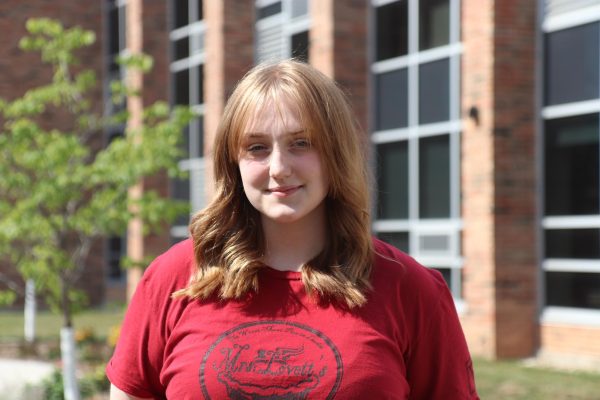Personal narrative: Scenes from Israeli-American life
January 8, 2014
By Hilah Kohen
I enjoy nothing more than a trip to my grandmother’s house. However, like many of my classmates, I don’t just go over the river and through the woods to get there. Two weeks ago, my parents, my brother and I went over the river, through the woods, over another river, through some more woods, over an ocean, and through a good portion of the European continent to complete a much-anticipated trip to northern Israel.
My nuclear family moved to the U.S. shortly before I was born, but nearly everyone within five little brackets on our family tree remains overseas. When we visit them, I’m always reminded of the stark differences and surprising similarities between Israeli and American culture and of the strange fusion of the two that my own existence represents. This year’s trip was no different. In this column, I’ll share it with you by highlighting the portions of our journey that best reveal the quirks of Israeli-American life.
————
Scene I: Actually, I meant Polish-American
Delta, schmelta. As any seasoned, Israel-bound traveler knows, LOT Polish Airlines is the way to go. After all, who doesn’t love cheap flights, 9-hour layovers in Warsaw, and the occasional command to fasten your pas bezpieczeństwa?
At about 2:00 p.m. Central European Time, our flight lands at Chopin Airport. The place has certainly earned its name: A poster on the wall announces new portraits of the famous composer in the Chopin Museum while a huge banner ad nearby implores, “Relax before your flight. Try out our multimedia bench and listen to selected works by F. Chopin.” As we pass bus drivers and family members holding signs with unpronounceable names, I spy one woman touting a piece of cardboard that says “I <3 Chopin” instead.
My family has no desire to remain under the composer’s gaze for half a day, so we catch a bus into the city. During World War II, most of its buildings were flattened by German bombings; its reconstruction has left a remarkable fusion of the very old and the very new.


After a few minutes of wandering, I spy a small coffee shop near the Old Town. Its name (“House Cafe”) and “Soup of the Day” are written in marker on its windows. The weather is warmer than Iowa’s, but that’s not saying much; soup sounds pretty good to me.
We soon discover that several other items on House Cafe’s menu definitely deserve a shout-out on the window. My brother and father savor glasses of cocoa thicker than any you could find in the U.S. as we share a cream cake iced with pink meringue. The shop has just begun offering baked potatoes: one employee, Yusuf, mashes the inside with butter and cheese before loading the mixture with toppings of my choice.

Yusuf says he and some friends just opened the cafe a few days ago. When I ask why, he says, “It’s a very long story. Very, very long.”
However, Yusuf has no trouble explaining why he enjoys his new career. “I like to see the satisfaction on people’s faces when they drink coffee. I also like coffee myself,” he says with a grin.
His co-worker, Julia, agrees. “I like to smile. Just a smile, it might make someone’s day.”
Scene II: On the road
We land in Tel Aviv on December 20th. As we prepare to stagger off the plane at 3:45 a.m. after twenty-four hours of travel, a Polish flight attendant addresses us over the intercom. She closes with a cheery “Merry Christmas and good night.” I smile. Her farewell is kind, but it’s the rough equivalent of leaving a flight bound for the Vatican with “Happy Hanukkah.”
A rental Ford Focus awaits us in a parking ramp. My father tunes the radio to the only station we ever listen to here: Galgalatz, also called Galei Tzahal. The name means Waves of Tzahal, and Tzahal is the Hebrew acronym for the Israeli Defense Forces.
Galgalatz is military-operated, but it’s one of the most popular radio stations in the country. It mostly broadcasts Israeli and international pop music along with news and traffic reports. Israel’s tiny size, just one third of Iowa’s, makes any major traffic jam national news.
As we drive north, the station begins its programming with a recorded sequence it has played every morning for decades upon decades. A man recites the Sh’ma, perhaps the most important prayer in the Jewish religion. Its opening translates as follows:
“Hear, Israel. The Lord is our God; the Lord is one.”
Scene III: Mediterranean diet
As we drive from my father’s hometown of Kibbutz Mishmar Haemek to the coastal city of Akko, one difference between Iowa and Israel becomes eminently clear: while my friends back home are suffering through temperatures well below freezing, the breeze outside my window clocks in at 65° Fahrenheit.

Our destination only emphasizes that difference. Akko’s ancient stone walls, towers, and alleys reach right up to the Mediterranean, where motorboats blare upbeat Arabic music and gaggles of teenagers wade through sunlit water. As we wander through the streets, Hebrew, English, and others join the Old City’s Arabic-speaking majority. We dodge a multitude of stray cats and horse manure to reach a restaurant on the shore.
Israeli food is rather hard to categorize. When Jews began to return to the area in the 19th and 20th centuries, they brought recipes from their homes around the globe and recombined them with local flavors. Mishmar Haemek’s communal cafeteria, for example, serves a delicious remix of Eastern European classics but often includes meals with Arabic accents.
Nevertheless, certain foods have become Israeli staples. Falafel, a deep-fried ball of ground chickpeas, sizzles on every street corner. Shawarma is sliced from a block of meat grilled on a turning spit throughout the day and coated in fatty deliciousness. When my father discovers that my great-grandmother, who has lived in Israel for 80 years, has never tried the latter dish, he exclaims, “Without shawarma, it’s like you haven’t been here at all!”
Likewise, so-called Eastern restaurants dot the Israeli landscape. The one we now approach specializes in seafood but is nonetheless eager to provide a classic meal. The first course presents a colorful array of small salads, humus, and tahini, which serve as dip for a basket of thick pitas. The second gives each diner a choice of kebabs, fish, and grilled meats. Finally, dessert arrives: strong Turkish coffee accompanies several dishes of baklava.

Our visit to Akko ends with a journey through its well-known marketplace. The shops smell heavily of fish but offer a wide selection of clothing, spices, candies, and more.


Though popular sentiment may differ, there’s no way this Mediterranean diet is ridding me of any weight. Then again, I have absolutely no problem with that.
Scene IV: The Xport factor
Mishmar Haemek is a kibbutz in northern Israel. A kibbutz is an Israeli collective community. Kibbutzim began as utopian societies: children were raised with peers rather than parents, and each member of the kibbutz worked for the entire group’s income and received an equal share of property. Today, kibbutzim have all become privatized to some degree. Mishmar Haemek, for example, is one of the few in which food is still provided communally in a cafeteria two or three times the size of West’s.
My father grew up in Mishmar Haemek, and his sister and her family still live there. We sit in their kibbutz-provided home on many evenings to chat and watch T.V. Today, the screen plays the Israeli version of The X Factor.
The contestants and their stories vary greatly: most are Jewish Israelis, but one is Israeli-American and another is a guest worker from the Philippines. One boy band highly reminiscent of One Direction sings “Some Nights” by fun. Their rendition is a hit with the judges, but the boys are instantly reprimanded for their song choice: the judges insist that each contestant at least occasionally sing in Hebrew.
That’s the same every year. Last winter, it was The Voice, and the year before that, a spinoff of American Idol. The Office of the U.S. Trade Representative claims that the U.S.’s top export to Israel is precious stones; each time we visit, I can’t help but wonder whether it’s actually something far less tangible.
————
I hope you’ve enjoyed my cross-cultural journey. Needless to say, it’s far from West High’s only one. If you have a Something-American scene to share, let me know via Facebook or Twitter.
In the meantime, hunt down some falafel. I think you’d enjoy it.




